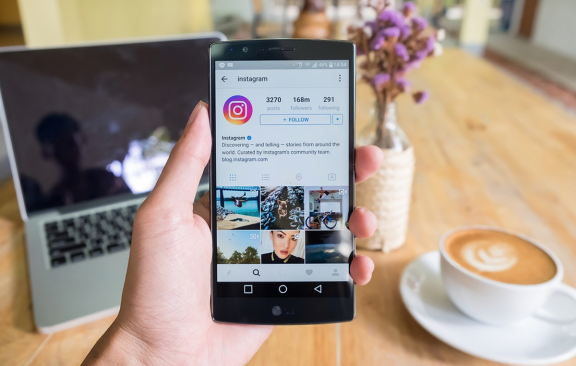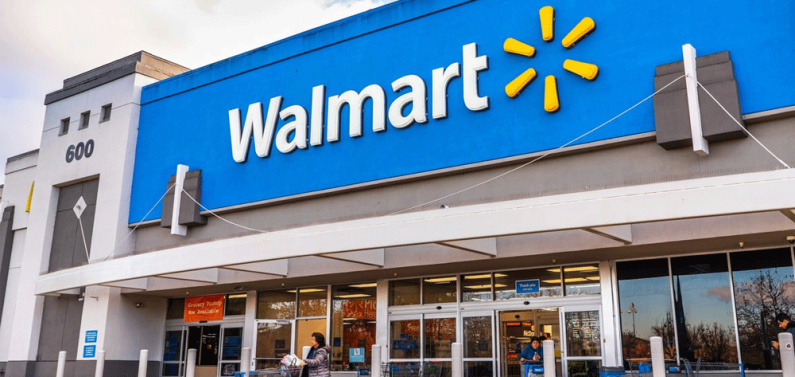How can dropshippers enhance their online presence and drive sales?
💡 Quick Answer: Elevate your strategy with Influencer Marketing. By building strategic partnerships, dropshippers can amplify their brand visibility and boost sales.
The rise of dropshipping has been one of the most exciting developments in eCommerce, and many entrepreneurs have jumped on the bandwagon.
If you haven’t done so, you should too. Trust me, it’s not too late.
The global dropshipping market size is set to rise from $128.6 billion to $476.1 billion by 2026. With so many new players entering the market every day, dropshippers should differentiate themselves through distinct branding.
One of the biggest drawbacks of the dropshipping model is that it can be difficult to make your store stand out from other retailers because they also stock very similar products. Some of them may even be from the same suppliers.
This is where branding comes in. When the items from two or more dropshippers are practically indistinguishable, brand perception will undoubtedly be the difference maker.
If you’re looking for a way to boost your eCommerce dropshipping business visibility and sales, you should look into influencer marketing.
It is one of the most effective and popular strategies (its market value exploded from $7 billion to $21.1 billion from 2019 to 2023)—and for good reason.
Think about it: you have likely been influenced into purchasing an item by someone you follow on social media.
- Why should you incorporate influencer marketing in dropshipping?
- 3 best practices when partnering with influencers for dropshipping
- Key elements of successful influencer campaigns
- Measuring and analyzing influencer marketing ROI
- Case study: Successful influencer marketing in dropshipping
- 3 mistakes to avoid in influencer marketing for dropshippers
- Integrating influencer marketing into dropshipping strategies
- Ethical considerations in influencer marketing
- Influencer marketing: The key to dropshipping success
Finding the right influencers to partner with can do wonders for dropshipping companies. They have developed trust and clout with their long list of followers, and you can take advantage of this built-in audience as their brand partner.
Don’t let your dropshipping business fall behind; invest in effective marketing strategies to boost your brand. This article is a deep dive into how influencer marketing can benefit your eCommerce store and lead to higher sales when done the right way.
Why should you incorporate influencer marketing in dropshipping?
It is becoming the norm for businesses in just about any industry to partner with influencers.
The State of Influencer Marketing 2024 report found that 85% of the marketing professionals surveyed believed it was an effective method to reach their audience. However, not all brands use influencer marketing for the same reasons. Some do so to increase their reach, others to build a bank of user-generated content (UGC), and some wish to see more engagement on their platforms.
Apart from these, here are two compelling reasons to incorporate influencer marketing while promoting your dropshipping business.
Amplify your brand’s visibility
Influencers build large followings because they are relatable, authentic, and approachable. All of these are also great qualities for an eCommerce dropshipping brand to have.
Partnering with influencers transfers these traits to your brand by association. When an influencer vouches for your eCommerce store in front of their audience, your credibility automatically goes up in their eyes.
There are various categories of influencers based on their number of followers. Before we discuss how they can increase your brand’s reach and visibility, here’s an overview of the types of influencers:
- Mega-influencers: Pop culture and social media celebrities with over 1 million followers
- Macro-influencers: Well-known figures with followings between 100,000 and 1 million
- Micro-influencers: Online personalities and minor celebrities with between 30,000 and 100,000 followers
- Nano-influencers: Amateur influencers who are just starting out or who are in a special niche, with followers between 5,000 and 30,000
Depending on your brand and marketing strategy, you can choose which kind of influencers to partner with for your dropshipping campaign. Every category has a different asking price, with nano-influencers costing brands the least and mega-influencers fetching thousands of dollars.
The size of an influencer's audience shouldn’t be the primary consideration for your dropshipping marketing campaign. What’s more important is that your brand can connect with the influencer’s existing community and convert them to paying customers.
Driving sales and conversions
The Influencer Marketing Hub report for 2024 found that over 80% of respondents felt that influencer marketing campaigns brought in high-quality customers.
It’s not surprising at all to learn that influencers are, well, influential with their audience. With consumers spending so much time online, it’s natural that their most trusted social media personalities play a role in their purchase decisions.
Influencer marketing can help your brand improve several elements of the buyer’s journey. Content for influencer marketing aids brand discovery; it can inform, educate, and, ultimately, even lead to a sale.
Start by tracking key metrics of influencer marketing campaigns, such as impressions, reach, new followers, and website traffic. This will help you see what kind of content is most effective in boosting your sales.
3 best practices when partnering with influencers for dropshipping

The internet, particularly social media, is packed to bursting with colorful characters with massive followings. However, simply being famous is not enough reason to partner with an influencer.
If you want to see maximum return on investment (ROI) for your influencer marketing campaign, it’s crucial to get the following fundamentals right:
1. Define your target audience and niche
Before thinking about an influencer’s audience, consider your own. A clear vision of your brand identity is the first step to building any effective marketing campaign.
As a dropshipping business, you likely specialize in certain products. Knowing the demand for these items and the type of consumers creating that demand will be extremely useful when looking for potential collaborators.
Knowing your audience will also help when you pitch to influencers—you will have a distinct vision and idea that you can get excited about together.
2. Align with influencers who have shared values
On the internet and in real life, consumers prize authenticity. This is why you should never try to force a fit with a successful influencer, even if they might seem like a superficial match for your brand.
A common audience is just the first component of a successful collaboration. Shared values ensure that all resulting content feels organic and natural rather than a paid promotion.
3. Negotiate mutually beneficial deals
Every influencer marketing campaign has one ultimate goal: to benefit the eCommerce business and influencer alike. The most fruitful campaigns with dropshippers and influencers tend to feature mutually beneficial deals.
Your business can offer free gifts or discounts or go the more straightforward route of paying the influencer’s fee per post.
Choosing an influencer to partner with should be a carefully considered decision. Once you have identified suitable candidates, make them an attractive offer that will also add value to your business.
Key elements of successful influencer campaigns
It takes a shared effort to build a successful influencer campaign. From the marketing department and the social media team to the influencers themselves, many people come together to create influencer-led branded content that meets its goals.
With so many stakeholders invested in the success of the operation, dropshippers must adopt key elements of successful influencer campaigns in their marketing plan.
Success hinges on two key elements. Let’s look at them in greater detail.
Content collaboration
Influencer marketing cannot work if either party tries to force their identity on the other. The campaign has to be a collaboration in the truest sense of the word, through which the brand and content creator can showcase their identity in the best possible light. This leads to content that is both engaging and authentic.
Too many brands make the mistake of imposing their identity and tone of voice on the influencers they collaborate with. As a dropshipping business owner, it is best to play your strengths, which are order fulfillment and customer experience.
Meanwhile, influencers know precisely how to tell stories and create posts to grab their followers’ attention. Giving them the freedom to express themselves will only benefit your brand over the course of the campaign.
Of course, you must find a balance—the marketing campaign cannot just be a vehicle for the influencer. Ultimately, the final product must align with brand messaging and entice customers to learn more. If your brand partners with the right influencer, this productive setup is an exciting process that will build a stronger relationship for future collaborations.
Strategic promotion
You can let your influencer take the lead, or at least have guiding input, for the campaign’s content. However, you should have full control over the actual promotion of your brand and products. This means implementing exclusive promotions and discounts that attract customers.
The most effective influencer marketing campaigns consider every little detail of promotion. This includes tailoring content according to the influencer’s platform. For example, LinkedIn audiences expect drastically different content from those on Instagram.
Furthermore, look for ways the influencer campaign can benefit your overall marketing strategy. For instance, you share the number of engagements on an influencer’s promotional post as a way to show off your brand’s reach.
Measuring and analyzing influencer marketing ROI

In 2022, the total spending for influencer marketing in the US was around $5 billion. By the end of 2024, the market value is estimated to grow to $24 billion.
With so much money being spent on influencer marketing, how do you ensure your dropshipping business gets the most bang for its buck? There are several ways to do so, and we shall look at them in detail.
Utilizing analytics tools
In the digital age, businesses have an array of solutions to analyze the results and performance of online marketing strategies. Influencer marketing platforms are valuable for discovering influencers and analyzing the potential value they could add to your business.
Some of the most popular third-party influencer management platforms include:
- CreatorIQ
- Influence.co
- Grin
General digital marketing analytics tools are available for dropshippers who want to analyze their campaigns. eCommerce platforms like Shopify have their own analytics platforms, and Google Analytics also helps gain valuable insights for your strategy.
Tracking key metrics
If you want to quantify how an influencer marketing campaign will benefit your brand, it’s best to identify the key performance indicators (KPIs) before you begin. These KPIs will serve as valuable metrics that will help you judge if you are getting a positive ROI.
Here are some KPIs to track:
- Conversions
- Engagement (comments, views, shares)
- Purchases
- Reach
- Web traffic
Adjusting strategies based on campaign insights
Being flexible and adaptable is part of the job description for dropshipping businesses. So, adjusting an influencer marketing strategy on the go should be easy.
The best part about using software as a service (SaaS) influencer marketing platforms and tracking KPIs is that you will always have a real-time overview of campaign performance. You can quickly identify areas for improvement and adjust your strategy to create a much more effective influencer marketing campaign.
Case study: Successful influencer marketing in dropshipping
A perfect example of a social media campaign paying off for the influencer and the company that hired them is Cuts Clothing’s TikTok campaign. The menswear brand partnered with micro-influencers on TikTok with the goal of raising brand awareness and increasing the influencers’ follower counts.
Over three months, a pool of 15 micro-influencers created two videos each per month. By the end of the trial period, the brand had a bank of high-quality UGC with minimal investment and had reached vast audiences, with views numbering from 150,000 to five million.
Participating influencers saw their follower counts rise as Cuts Clothing saw its average cost per acquisition (CPA) go down, resulting in massive benefits for all.
3 mistakes to avoid in influencer marketing for dropshippers
By this point, you will have understood how influencer marketing can boost your dropshipping business when done correctly. It’s also important to remember that there is also a wrong way to run an influencer marketing campaign. A poorly executed campaign can do more harm than good for your brand by bringing in negative attention or wasting your marketing budget on uninterested audiences.
If you want your influencer marketing campaign to run smoothly and net a positive return on your investment, avoid these three common mistakes made by dropshippers:
1. Choosing influencers based solely on follower count
Influencer marketing is a targeted approach where quality counts over quantity. If you wanted to put your brand in front of the largest audience possible, you could opt for more effective methods like multichannel advertising and search engine optimization (SEO). The appeal of influencer marketing is the ability to connect with a very specific set of consumers who are the most likely to engage with your brand. All you need to do is identify which influencer those consumers likely follow on social media.
Instead of choosing influencers based on their follower count, look at their content and the audience that engages with it. Studies have shown that most brands prefer to work with nano- and micro-influencers for their marketing campaigns, and these smaller influencers tend to have the most impact in terms of conversions despite their smaller reach.
2. Ignoring authenticity and alignment with brand values
Any influencer campaign that compromises on authenticity is likely to lose its audience’s interest. This will hurt both the business and the online personality: the brand comes off as out-of-touch and the influencer a sellout. This is why finding an influencer that feels like a natural fit with your brand’s values and tone of voice is so important.
Without these shared qualities, your collaboration will not last very long. For example, if your dropshipping store sells sustainable clothing, but the influencer you partner with is known for wearing and promoting fast fashion, you risk alienating vast audiences.
3. Failing to establish clear expectations in partnerships
Launching an influencer marketing campaign requires a considerable investment. You must account for the influencer’s fees, production budgets for content, and other costs incurred while preparing the campaign.
It’s just bad business sense to enter such an investment without a reasonable estimation of what the returns could be. Clearly define the KPIs in the influencer contract and monitor each campaign to see that it is performing according to the agreed terms.
Integrating influencer marketing into dropshipping strategies

By partnering with the right mix of influencers, your dropshipping store will stand out from the competition and capture a significant portion of your target market. And working with influencers doesn’t have to be a one-off for your brand. You can incorporate the benefits of partnering with influencers into your overall marketing strategy.
One of the easiest ways to integrate influencer collaborations into your overall marketing plan is by creating assets that you can use for different platforms and channels. You can also create a customized plan for each product and influencer for maximum audience penetration.
As your brand builds relationships with more and more like-minded influencers, you can build a community from your shared followers. This can be leveraged by inviting influencers to raise the profile of upcoming product launches and promotions on your dropshipping store.
Ethical considerations in influencer marketing
Influencers agree to put their name and face to a brand’s campaign in order to raise its profile. In return, they have a fair expectation that the brand will see through the partnership in a professional manner.
The parties have an obligation to each other, but they also have a responsibility to their respective audiences.
To ensure that your dropshipping store’s influencer marketing campaign is conducted fairly and ethically, keep these in mind:
Ensure transparency and authenticity in collaborations
Setting clear expectations of what the partnership will lead to provides a solid foundation to build on. The brand and influencer should maintain complete clarity about the deliverables they owe one another and keep lines of communication open throughout the campaign.
Respecting influencer and audience relationships
Think of influencer marketing as a very popular person introducing your brand to their extended circle of friends. Your brand is the outsider in this equation, and you should let your influencer partner take the lead on the messaging that will resonate with the audience the most.
Navigating disclosure and guidelines for ethical practices
While the influencer’s following might be discovering your brand for the first time, your existing customers will have certain expectations from your brand. In order to uphold their trust, make it clear that the collaboration is the result of an ongoing campaign rather than trying to pass it off as a random endorsement.
The fact that a verified influencer chose to partner with your brand is enough to instill faith in the audience that matters most.
Influencer marketing: The key to dropshipping success
Without the rise of eCommerce, we wouldn’t have dropshipping or influencer marketing. As the retail landscape continues to shift to digital, there will be even more exciting developments in the future.
As interest in influencer marketing continues to grow, it marks a perfect time for a dropshipping business to give it a try.
More exciting technologies, like virtual influencers and AI-enhanced campaign analytics, are on the horizon. Even as ecommerce continues to evolve in the next few years, influencer marketing will remain an effective way for dropshipping businesses to boost brand visibility and increase sales.
Once you’ve launched your first successful influencer marketing campaign, your business will need a comprehensive platform to track your dropshipping sales. Dropshippers who already use Shopify can easily subscribe to SaleHoo Dropship, a one-stop solution where you can track all your product, supplier, and shipping details in one place. Or, if you prefer to find your own suppliers, just head over to SaleHoo’s renowned Directory to find suppliers in your preferred niche and location. Of course, if you have any questions regarding SaleHoo, just reach out to our 24/7 support staff at any time.!









